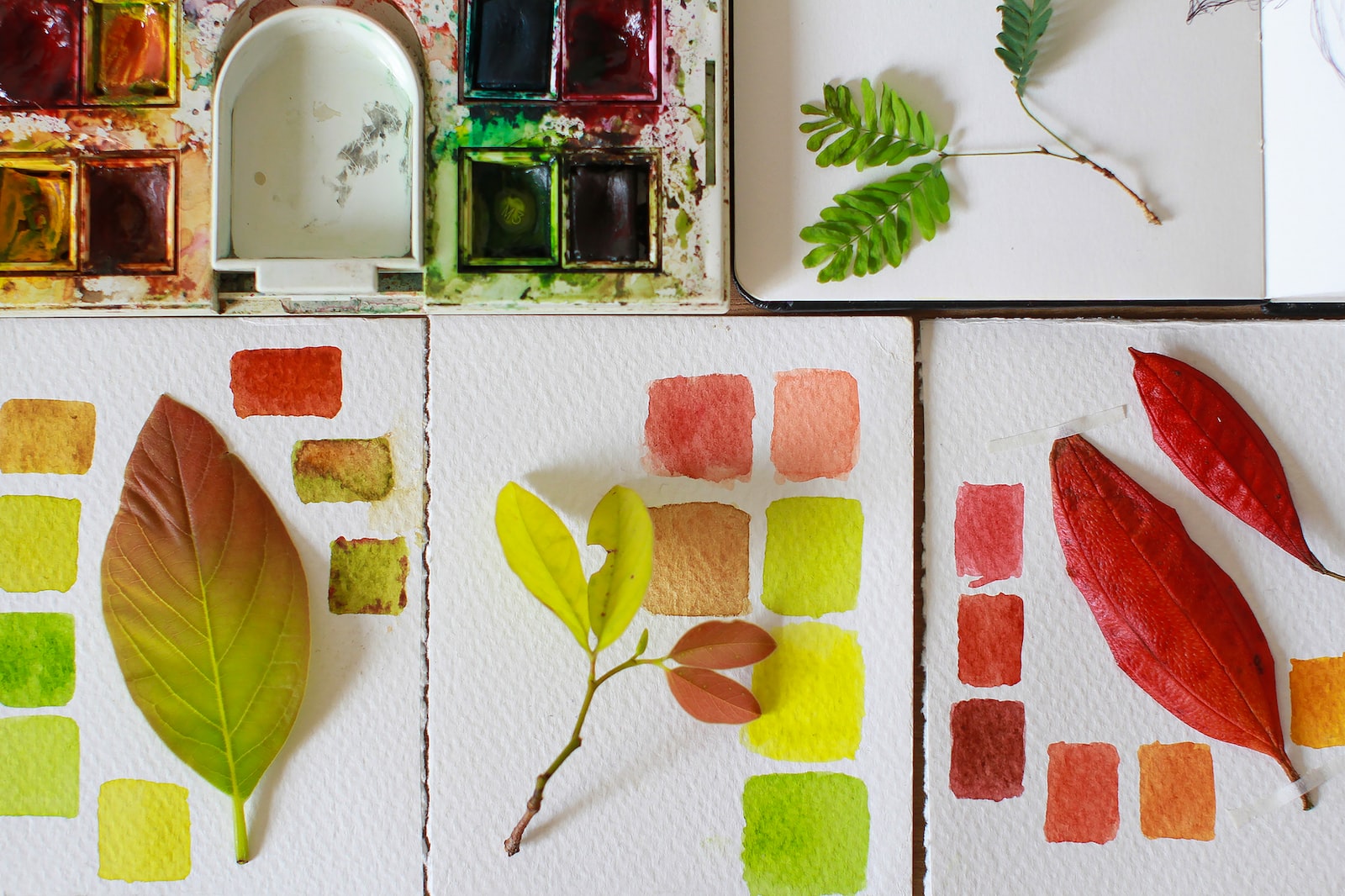Watercolour out of the tube or the pan is at its full paintable strength. Seldom will it be used in that manner except when the design calls for it? However, the use of full-strength colour is by large discouraged due to bronzing when watercolour is applied to the paper dries. Diluting and mixing colour pigments with water changes their values, depth, and hue. When applying watercolour though, an important thing to remember is that the colour will tend to be lighter when the colour dries. If you want stronger colour, you can make adjustments by applying slightly stronger hues before application or you can dab some more colour to the object when the paint is already dry.
Creating test sheets
Before attempting to mix watercolour pigments, it is advisable to test out the colours first on clean paper to get a good grasp on how it behaves and the colour when it dries. Paint on damp paper the colours that you will use. Maintain a uniform brush stroke starting with the lightest colour to the stronger ones. Label the colour and maintain a clean brush while doing the strokes. When the paints are dried compare them to the colours in your colour well to judge how the final outcome of the colours will be.
Mixing a Puddle of Color
To start your puddle, wet the brush in clean water. This opens up all the hairs in the brush up to the ferrule. At this point, your brush would likely be fully loaded with water, if so, remove excess water by thumping the brush a few times or running the brush across the rim of the mixing well.
Add the first colour (blue for example) by touching the tip of the brush across your pigment and dilute it some more with your puddle of water. Start painting and continue the process until you get the colour value that you desire.
You do not need to wash your brush if you want to add another colour for the combination. Touch the tip of your brush to a new colour (Green for example), dilute it with your puddle of water, and apply it over the blue or parts of the blue that you painted previously. Continue adding strokes until the correct colour is achieved.
To keep tube and pan colours pure, place small amounts of the pigments in a separate well. This way, all your colours stay clean and will not intermingle with one another.
Practice mixing Primary Colors
To achieve a very good grasp of how colours behave and how they will affect your work, it is advisable to practice with primary colours. The primary colours are the colours Red, Blue, and Yellow. Combining these colours in different degrees will give you infinite colour combinations. Most professional artists use only these colours and have created masterpieces out of them.
This is the best practice that you could have in mixing colours and making colour combinations. Try to produce different colour hues. The experience that you will derive here will be priceless.


